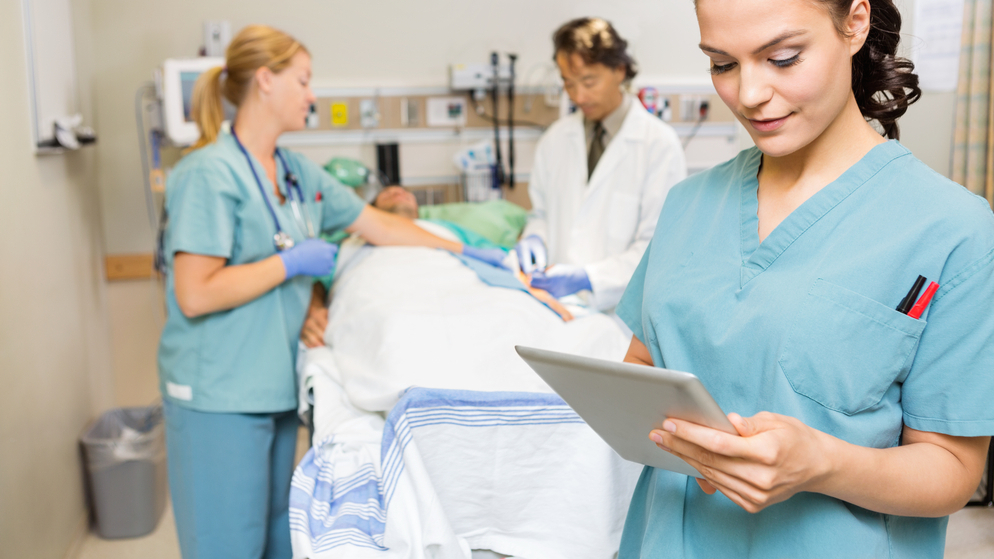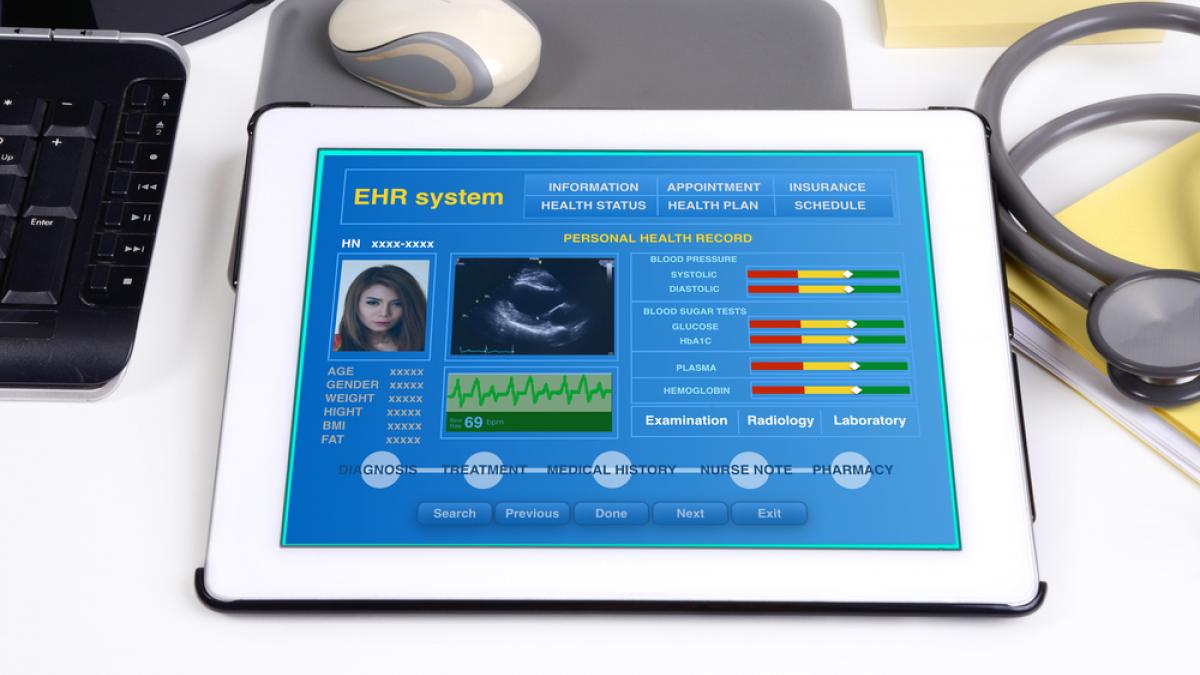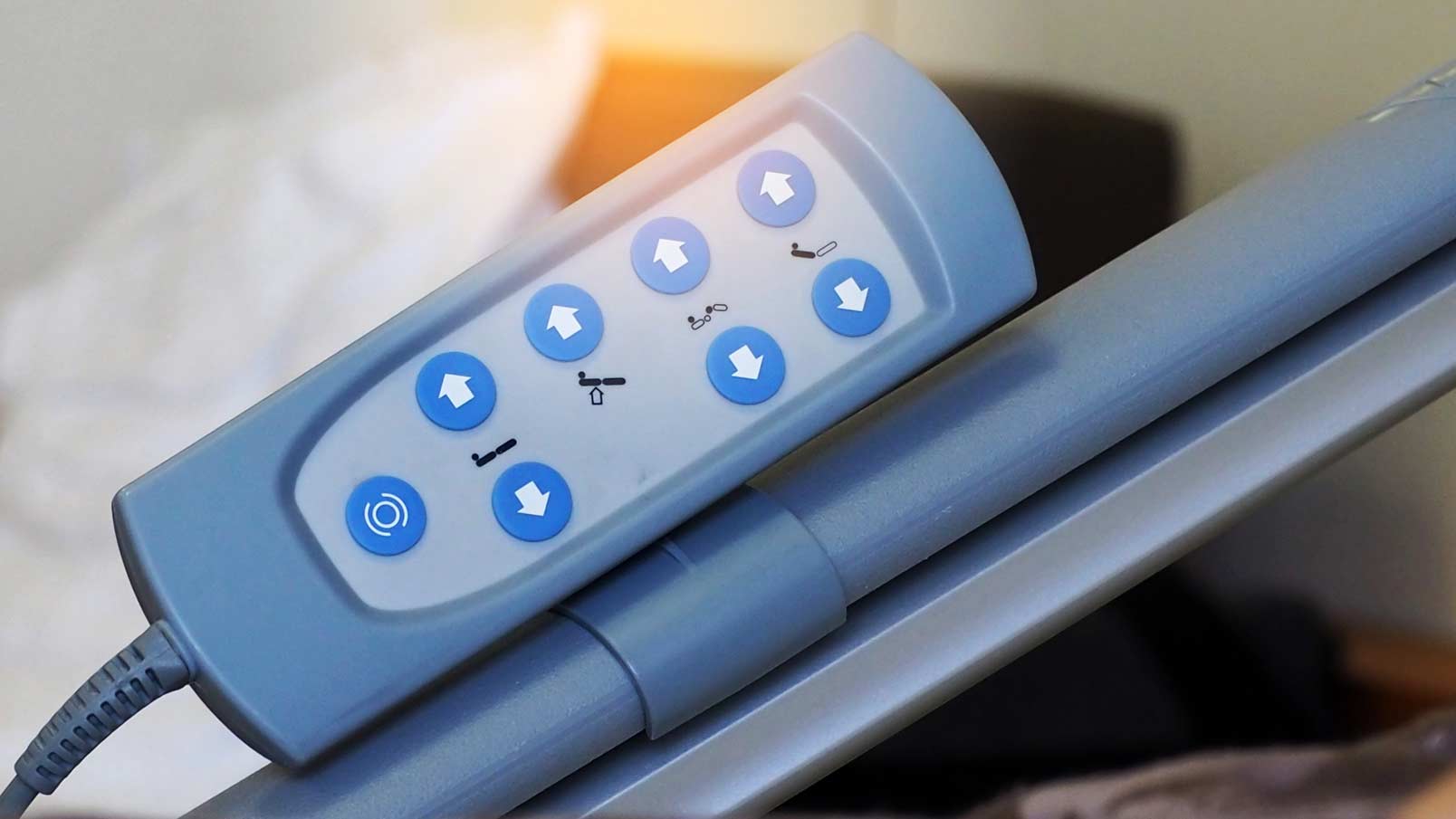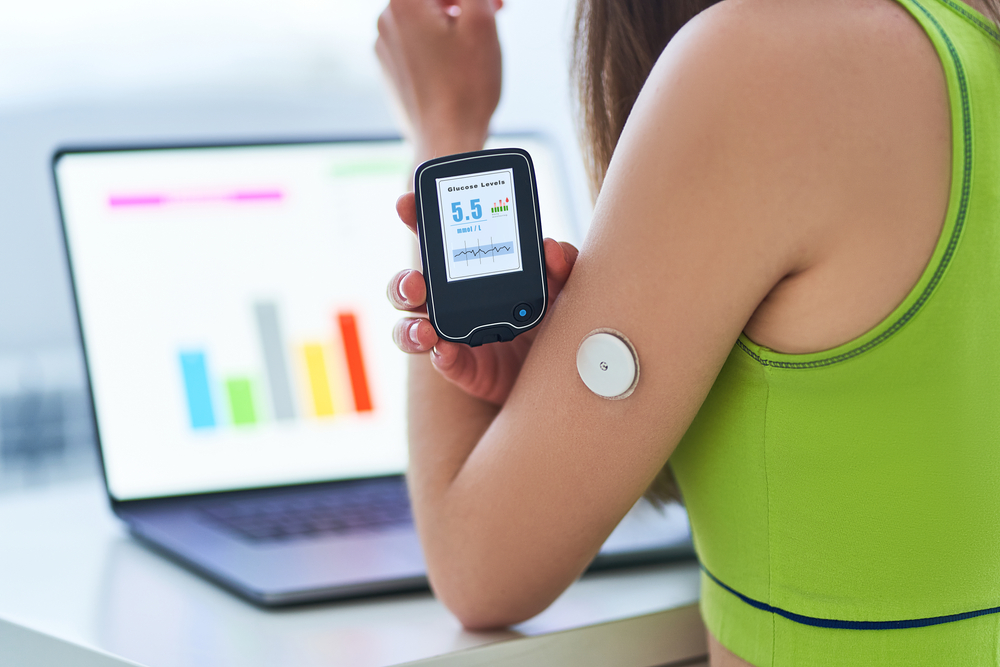Healthcare technology refers to IT tools and software designed to improve healthcare productivity, provide new insights into treatments and medicines, and improve the quality of healthcare delivered.
Improvements in computers and networking have increased options in medical treatments and changed how nurses perform their duties. New medical technologies make patient care easier and more efficient for nurses managing a large number of patients. Technological advances include electronic health records (EHRs), quality dashboards, data analytics, predictive analytics, smart beds, and wearable devices.
Nurses have knowledge and skills that enable them to provide quality patient care. They have excellent communication skills and have empathy and compassion for their patients. Medical expertise and building relationships with patients are crucial in the nursing role. Nurses are educated about new medical technologies and practices and use these to optimize their nursing practice. New technologies make nurses’ daily duties more manageable; technology allows nurses more time to connect with patients and access information more easily.
For nurses who wish to advance their careers, Texas Woman’s University offers a master’s in nursing with a Family Nurse Practitioner specialism. Working nurses can take this online degree and learn advanced clinical skills that can expand their expertise in the nursing field. The program also includes a nurse practitioner clinical placement arranged with the university’s assistance, along with fully remote 13-week week didactic modules which ensure students study the highest quality patient care.
The Bureau of Labor Statistics predicts that demand for nurse practitioners will rise 45% by 2032. This is a markedly high increase in comparison to other occupations. There are various reasons for this growth, including the growing numbers of older people, the increased needs of underserved communities, and the high regard for NPs who are recognized for improving health outcomes.
Benefits of technology to nurses

Source: thejournalofmhealth.com
Technology can be used to support nurses and keep on top of the demands of health services. Innovations can help with repetitive tasks and assist nurses in managing many time-consuming responsibilities.
Nurses access and apply data insights to ensure patient safety. In previous times, nurses had many different sources of information to connect and act upon. Access to EHR records allows nurses to optimize many of these processes and dedicate more time to patients.
Nurses do not want technology to replace personal interaction with patients, however. Interaction with nurses is important to patients and can make them feel more comfortable and cared for. Nursing staff seek to find a good balance between technology and direct patient care.
Nurses also document patient information to ensure effective care provision. Nurses must be trained to effectively manage the flow of documentation across different healthcare systems. Technology is improving standards and patient care in nursing through evidence-based practice and assists with clinical decision-making. Nurses have also been helped by standardizing care delivery within the healthcare field.
Nurses usually coordinate care for the healthcare team, and technology has made this more efficient and streamlined. With nursing shortages, more of the population aging, and increased life expectancy, medical technologies are crucial for patient care and the healthcare system’s future. They also assist patients with more accessible and convenient options.
Data analysis
Data analysis is relevant to operations management and all aspects of patient care. Data analysis can be used to improve healthcare and the different treatment possibilities. Data analysis in healthcare can also find new strategies, forecast the future, decide what to explore next and improve understanding of historical trends. Data analysis is likely to have the most impact on areas such as personalized patient care, the discovery of new drugs, early detection of disease, automation of hospital administrative procedures, effective sharing of patient data, and research and prediction of disease.
An example of data analysis in healthcare is the clinical and molecular data library that allows healthcare professionals to have a coherent clinical context for each cancer patient. Data is provided by cancer research, radiology and pathology images, clinical notes, and laboratory reports. The objective is to allow medical staff to individualize treatment. The complexity of many cancers means there is a lot of data to consider. Machine learning models have been developed that can recognize biomarkers on mammogram screening and predict the risk of having breast cancer.
Data analysis improves staffing and scheduling, gives patients more options with appointments, and reduces patient waiting times. Hospital readmission rates can be reduced by using data to recognize which patients are most at risk. Data analysis can support clinical decisions from doctors and nurses and enable efficient healthcare provision. Healthcare providers adopt a systematic outlook to optimize patient outcomes and improve processes.
Healthcare providers aim to treat patients safely while reducing any pain or trauma related to their treatment. They do this by collecting and analyzing patient data to better understand complex medical situations. They use a systematic outlook to have good patient outcomes and implement improvements to healthcare processes. Analyzing patient data can contribute to more accurately identifying at-risk patients, fewer errors, and reduced readmission rates. Patient data analysis can include temperature, blood test results, blood sugar level, and the patient’s requirements.
The amount of data to be analyzed can be narrowed down by focusing on key performance measures and collecting data that relates to these measures, and this data can be tracked over time to identify improvements.
Predictive analytics

Source: philips.com
In modern healthcare, data-related insights allow organizations to recognize potential problems, identify health trends, and foresee patient needs. Analytics mean healthcare providers can predict health outcomes and allocate the necessary resources, meaning care is cost-effective and improved. Analytics consider the patient’s genetics and medical history and individualize treatment. Predicting resource needs means operations are more efficient, and early interventions can mean fewer hospital readmissions.
Predictive analytics is transforming patient care, giving an understanding of current challenges and potential outcomes. Machine learning and data mining techniques identify potential problems and risks and improve patient care. Predictive analysis can significantly impact surgery, emergency care, and intensive care, where a quick response can improve patient outcomes.
Predictive analytics can also foresee the spread of disease, the likelihood of trends, and many health conditions, meaning healthcare professionals can make knowledgeable decisions about patient care and how to tailor it to individual patients. Analytics can recognize at-risk patients and interventions can make problems less likely and allow hospitals to arrange necessary resources for at-risk patients and provide accurate diagnoses.
Furthermore, analytics recognize patterns in EHR health data and give warnings that a patient should visit the emergency room (ER). Nurses can use EHR health data to act early and avoid visits to the ER, which is better for the patient and reduces the workload at the ER.
Predictive analytics can also give important information to nurses in the intensive care unit, where well-timed interventions can be critical for patients. Vital signs are monitored by predictive algorithms and interventions are identified when needed. Analytics also identify warning signs for patients in a general ward, notifying staff that the rapid response team is needed.
Telemedicine

Source: amdtelemedicine.com
Telemedicine provides remote healthcare services, which allows people living in remote or rural areas to receive quality care. Hospitals use telemedicine to monitor patients remotely and give them access to remote medical specialist care. Telemedicine is used for consultations, initial diagnosis, and education for healthcare staff. Individual treatment plans are developed to include preventative measures, which are used to reduce hospital admissions or readmissions.
Reducing the number of patients in hospitals means less cost and better service. Telemedicine and remote nursing allow for greater access to healthcare, particularly in underserved areas, offering convenience for patients as there is no travel involved. Ultimately, telemedicine improves collaboration and communication among healthcare professionals, protects against medical errors, and delivers care efficiently.
The three types of telemedicine are interactive medicine, store and forward, and remote patient monitoring. Medical staff monitor their patients remotely and record medical information, and interactive medicine involves communication between patients and health professionals through video calls. Store and forward sends medical reports and images to the practitioner, which means medical staff do not have to see their patients in person. Monitoring patient care minimizes the spread of infections, decreases hospital readmissions, and improves chronic condition management.
Telemedicine has also made a difference in the treatment of patients with chronic disease that is affected by diet by encouraging patients to adopt healthier lifestyles and increase regular contact with health professionals. Hospitals use virtual care technologies and telemedicine to deliver quality care in all aspects of care.
Telemedicine has become more affordable and accessible and allows healthcare organizations to treat patients who live some distance away. Telemedicine is used for innovative medical care, and healthcare organizations are developing new practices to improve health outcomes. By providing patients with the opportunity to access emergency and preventative care, telemedicine improves access, avoids the spreading of infection, and improves outcomes.
Electronic health records

Source: csp.org.uk
Electronic health records (EHRs) are a digital version of a patient’s paper chart. They were established to improve patient care and treatment efficiency. With EHR, the documentation process is streamlined, and costs are reduced. EHRs can be accessed instantly and securely by authorized users, and they give an in-depth view of a patient’s care. They contain a patient’s medical history, test results, medications, immunization dates, allergies, and radiology images.
EHRs provide patient data and suggest ideas for improving care. EHRs can have extensive data about a patient’s medical history with notes from previous doctors and nurses, past and current medication, treatments or surgeries, family health history, and other important information.
Data analysis can recognize disease patterns and send warnings to medical staff. Doctors and nurses can use analysis to identify the best treatments and change their practice appropriately. EHR data can identify the spreading of disease, prevent medication errors, and ensure treatment and prevention plans are in place.
Every patient has a digital record with information such as medical history, test results, and demographics. Using EHR, records can be updated without duplicating information, and data can give insights into care improvements. Patients at risk from infection can be identified, and preventative strategies used. Skilled staff are needed to develop and interpret data and make recommendations. Nurses have the education and training to understand different indications on medical records and the correct course of action to improve patient outcomes.
Quality dashboards
Quality dashboards are data management tools that collect data from information systems and present it concisely as key performance indicators. The dashboard gives a visual depiction of important information that shows an organization’s quality performance. Critical quality measures and performance data are shown on the computer screen to enable reporting and facilitate quality management analysis. Performance in departments can be evaluated with problems identified and goals set for improvement.
Quality dashboards assist in tracking and evaluating quality management, risks, and issues. Hospital staff have an overview of progress from quality measures and data targets. These could include care processes, including how many patients have had immunizations or mammograms, or outcome variables like hospital-acquired infection rates and surgical complications.
Quality management dashboards give a visual representation of data that assists decision-making. Corrective actions can be taken if there have been adverse events in a department. Quality dashboards show metrics and other quality key performance indicators related to:
- Patient complaints and satisfaction ratings
- Patient access (e.g., waiting times, number of patients who left the emergency department without being seen)
- Clinical outcomes (e.g., readmission rates)
- Never and sentinel events (e.g., mortality)
- Harmful events (e.g., infections, falls, medication errors)
Smart beds

Source: hospitalsmagazine.com
Smart bed technology can help nurses track patients’ weight, vitals, and movement. They also contribute to patients being safe and comfortable while in hospital. These beds are designed with the latest technology to provide accurate care. Wireless smart beds include a device connected directly to the nursing department. Nurses can follow up on the patient’s condition, monitor vital functions, and track the condition remotely, taking into account patient rounds and providing direct care and communication.
Monitoring technologies and remote sensors leave nurses free to complete other work while ensuring a patient’s safety. Smart bed technology provides regular communications and updates on patients’ activities and can help nurses identify patterns leading to a new diagnosis or understanding of a condition. With smart beds, nurses spend less time adjusting supplies and medical equipment.
Smart beds are designed to make patient movement easier and alert the nursing staff when the patient moves or leaves the bed. Sensors can monitor the health of the elderly, and other wireless devices, like wearable health monitors, can encourage users to have a healthier lifestyle. These advanced beds help to restore the patient’s health and contribute to a quicker recovery and an earlier discharge from the hospital. Smart beds mean patients do not have to have their position changed regularly and reduce injuries as technology keeps them in an optimal position. Information is sent directly to the healthcare provider via the internet or remote sensors and control devices.
Wearable devices

Source: sterlingmedicaldevices.com
In the healthcare sector, wearable technology is used in various ways to improve patient care. Wearable devices and mobile applications can track heart rates, blood pressure, and oxygen levels. They can also track respiration, sleep, and exercise, giving people more control over their health. Wearable devices are for health tracking and specific patient monitoring and can help the whole healthcare process, from diagnosis to recovery. They also remove the possibility of human error for nurses because data is communicated directly from the device. Sensors track patient symptoms and provide feedback to nurses.
This allows for more rapid communication between providers and patients, helping to improve efficiency and quality of care. With wearable devices, record keeping is faster, and nurses can consistently monitor health, improving the accuracy of diagnoses and treatment plans.
Wearable devices are increasingly being introduced to patient care, and they have had a significant positive impact. These devices help patients track their health data and doctors can use the information without having to conduct a physical examination. This is beneficial for patients as they can oversee their response to treatment and medication while doctors can see what the situation is without having an appointment with the patient.
Tracking data about surgeries and medical conditions can save time and money on medical treatments. Wearable devices can be communication tools between healthcare staff and patients so that both parties can receive necessary information quickly.
Conclusion
Advances in healthcare technology have changed processes and affected the nursing role. Innovations have streamlined patient care and improved patient outcomes. Healthcare organizations have embraced the impact of technology on healthcare, and nurses are among the key staff who use this technology. Nurses still see their patients in person, but they also make the most of new modes of practice.
Technology offers greater monitoring and analysis of patient care and allows nurses to be more efficient and more aware of each patient’s condition. When combined with expert nursing care, advanced technology results in quality patient care and improved health outcomes. Nurses can benefit from technological provision by using it as the foundation to develop their practice.
